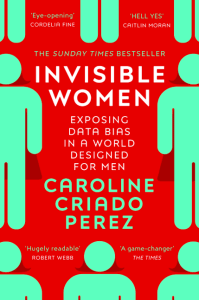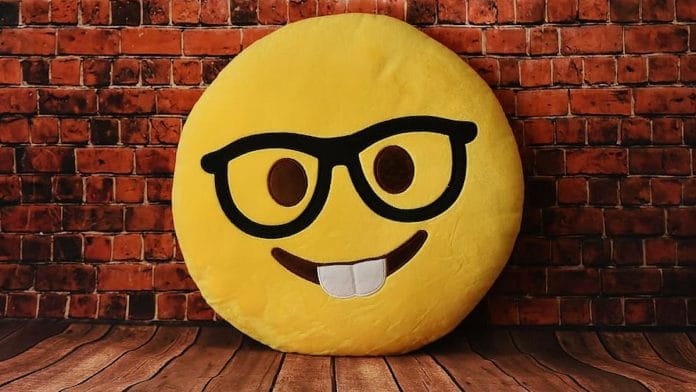It’s tempting to think that the male bias that is embedded in language is simply a relic of more regressive times, but the evidence does not point that way. The world’s ‘fastest-growing language’, used by more than 90% of the world’s online population, is emoji. This language originated in Japan in the 1980s and women are its heaviest users: 78% of women versus 60% of men frequently use emoji. And yet, until 2016, the world of emojis was curiously male.
The emojis we have on our smartphones are chosen by the rather grand-sounding ‘Unicode Consortium’, a Silicon Valley-based group of organisations that work together to ensure universal, international software standards. If Unicode decides a particular emoji (say ‘spy’) should be added to the current stable, they will decide on the code that should be used. Each phone manufacturer (or platform such as Twitter and Facebook) will then design their own interpretation of what a ‘spy’ looks like. But they will all use the same code, so that when users communicate between different platforms, they are broadly all saying the same thing. An emoji face with heart eyes is an emoji face with heart eyes.
Unicode has not historically specified the gender for most emoji characters. The emoji that most platforms originally represented as a man running, was not called ‘man running’. It was just called ‘runner’. Similarly the original emoji for police officer was described by Unicode as ‘police officer’, not ‘policeman’. It was the individual platforms that all interpreted these gender-neutral terms as male.
Also read: Can emojis be evidence in court? Forensic linguists are figuring it out
In 2016, Unicode decided to do something about this. Abandoning their previously ‘neutral’ gender stance, they decided to explicitly gender all emojis that depicted people. So instead of ‘runner’ which had been universally represented as ‘male runner’, Unicode issued code for explicitly male runner and explicitly female runner. Male and female options now exist for all professions and athletes. It’s a small victory, but a significant one.
It’s easy to slam phone manufacturers and social media platforms as sexist (and, as we shall see, they are, if often unknowingly), but the reality is that even if they had somehow managed to design an image of a ‘gender neutral’ runner, most of us would still have read that runner as male, because we read most things as male unless they are specifically marked as female. And so while it is of course to be hoped that angry grammarians will come round to the idea that saying ‘he and she’ (or even, God forbid, ‘she and he’) instead of just ‘he’ may not be the worst thing that has ever happened to them, the truth is that getting rid of the generic masculine would only be half the battle: male bias is so firmly embedded in our psyche that even genuinely gender-neutral words are read as male.
A 2015 study identified the top five words used to refer to people in human–computer interaction papers published in 2014 and found that they are all apparently gender neutral: user, participant, person, designer and researcher. Well done, human–computer interaction academics! But there is (of course) a catch. When study participants were instructed to think about one of these words for ten seconds and then draw an image of it, it turned out that these apparently gender-neutral words were not perceived as equally likely to be male or female. For male participants, only ‘designer’ was interpreted as male less than 80% of the time (it was still almost 70% male). A researcher was more likely to be depicted as of no gender than as a female. Women were slightly less gender-biased, but on the whole were still more likely to read gender-neutral words as male, with only ‘person’ and ‘participant’ (both read by about 80% of male participants as male) being about 50/50.
This rather disheartening finding tallies with decades of ‘draw a scientist’ data, where participants overwhelmingly draw men (the bias has historically been so extreme that media around the world celebrated as great progress a recent paper which found that 28% of children now draw women). It also tallies, perhaps more disturbingly, with a 2008 study in which Pakistani students (aged nine and ten) who were asked to draw an image of ‘us’. Hardly any of the female students drew women and none of the male students did.
We don’t even allow non-humans to escape our perception of the world as overwhelmingly male: when researchers in one study attempted to prompt participants to see a gender-neutral stuffed animal as female by using female pronouns, children, parents and carers still overwhelmingly referred to the animal as ‘he’. The study found that an animal must be ‘super-feminine’ before ‘even close to half of participants will refer to it as she rather than he’.
Also read: Apple has a menstruation emoji now, and here’s why it matters
To be fair, it’s not an entirely unreasonable assumption: often it really is a he. A 2007 international study of 25,439 children’s TV characters found that only 13% of non-human characters are female (the figure for female human characters was slightly better, although still low at 32%). An analysis of G-rated (suitable for children) films released between 1990 and 2005 found that only 28% of speaking roles went to female characters – and perhaps even more tellingly in the context of humans being male by default, women made up only 17% of crowd scenes.
 This excerpt from Invisible Women: Exposing Data Bias in a World Designed by Men by Caroline Criado Perez has been published with permission from Penguin Random House UK.
This excerpt from Invisible Women: Exposing Data Bias in a World Designed by Men by Caroline Criado Perez has been published with permission from Penguin Random House UK.






